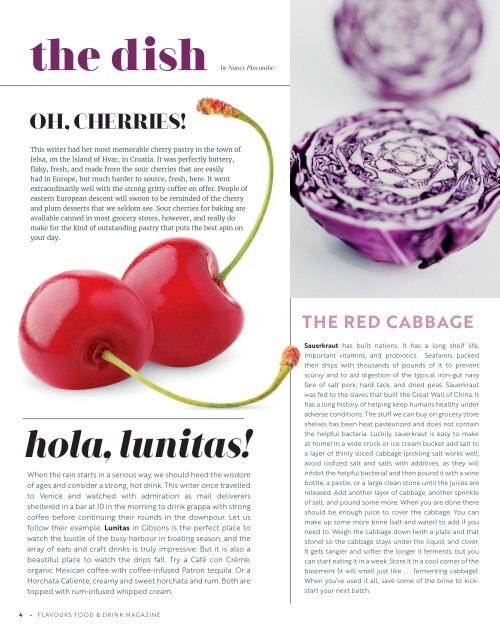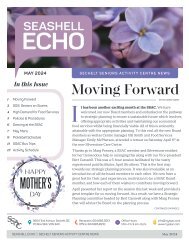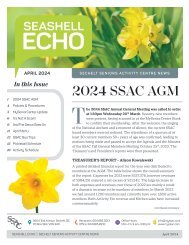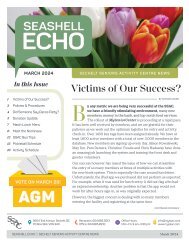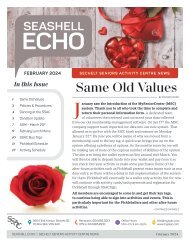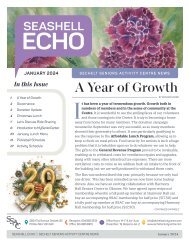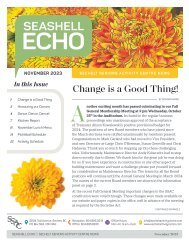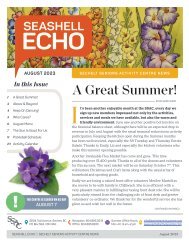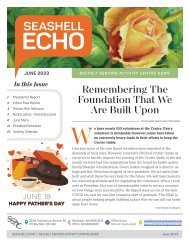Flavours Issue 3
The food and drink magazine of the Sunshine Coast of British Columbia, Canada
The food and drink magazine of the Sunshine Coast of British Columbia, Canada
You also want an ePaper? Increase the reach of your titles
YUMPU automatically turns print PDFs into web optimized ePapers that Google loves.
the dish by<br />
Nancy Pincombe<br />
OH, CHERRIES!<br />
This writer had her most memorable cherry pastry in the town of<br />
Jelsa, on the Island of Hvar, in Croatia. It was perfectly buttery,<br />
flaky, fresh, and made from the sour cherries that are easily<br />
had in Europe, but much harder to source, fresh, here. It went<br />
extraordinarily well with the strong gritty coffee on offer. People of<br />
eastern European descent will swoon to be reminded of the cherry<br />
and plum desserts that we seldom see. Sour cherries for baking are<br />
available canned in most grocery stores, however, and really do<br />
make for the kind of outstanding pastry that puts the best spin on<br />
your day.<br />
THE RED CABBAGE<br />
hola, lunitas!<br />
When the rain starts in a serious way, we should heed the wisdom<br />
of ages and consider a strong, hot drink. This writer once travelled<br />
to Venice and watched with admiration as mail deliverers<br />
sheltered in a bar at 10 in the morning to drink grappa with strong<br />
coffee before continuing their rounds in the downpour. Let us<br />
follow their example. Lunitas in Gibsons is the perfect place to<br />
watch the bustle of the busy harbour in boating season, and the<br />
array of eats and craft drinks is truly impressive. But it is also a<br />
beautiful place to watch the drips fall. Try a Café con Crème,<br />
organic Mexican coffee with coffee-infused Patron tequila. Or a<br />
Horchata Caliente, creamy and sweet horchata and rum. Both are<br />
topped with rum-infused whipped cream.<br />
Sauerkraut has built nations. It has a long shelf life,<br />
important vitamins, and probiotics. Seafarers packed<br />
their ships with thousands of pounds of it to prevent<br />
scurvy and to aid digestion of the typical iron-gut navy<br />
fare of salt pork, hard tack, and dried peas. Sauerkraut<br />
was fed to the slaves that built the Great Wall of China. It<br />
has a long history of helping keep humans healthy under<br />
adverse conditions. The stuff we can buy on grocery store<br />
shelves has been heat pasteurized and does not contain<br />
the helpful bacteria. Luckily, sauerkraut is easy to make<br />
at home! In a wide crock or ice cream bucket add salt to<br />
a layer of thinly sliced cabbage (pickling salt works well;<br />
avoid iodized salt and salts with additives, as they will<br />
inhibit the helpful bacteria) and then pound it with a wine<br />
bottle, a pestle, or a large clean stone until the juices are<br />
released. Add another layer of cabbage, another sprinkle<br />
of salt, and pound some more. When you are done there<br />
should be enough juice to cover the cabbage. You can<br />
make up some more brine (salt and water) to add if you<br />
need to. Weigh the cabbage down (with a plate and that<br />
stone) so the cabbage stays under the liquid, and cover.<br />
It gets tangier and softer the longer it ferments, but you<br />
can start eating it in a week. Store it in a cool corner of the<br />
basement (it will smell just like . . . fermenting cabbage).<br />
When you’ve used it all, save some of the brine to kickstart<br />
your next batch.<br />
4 FLAVOURS FOOD & DRINK MAGAZINE


